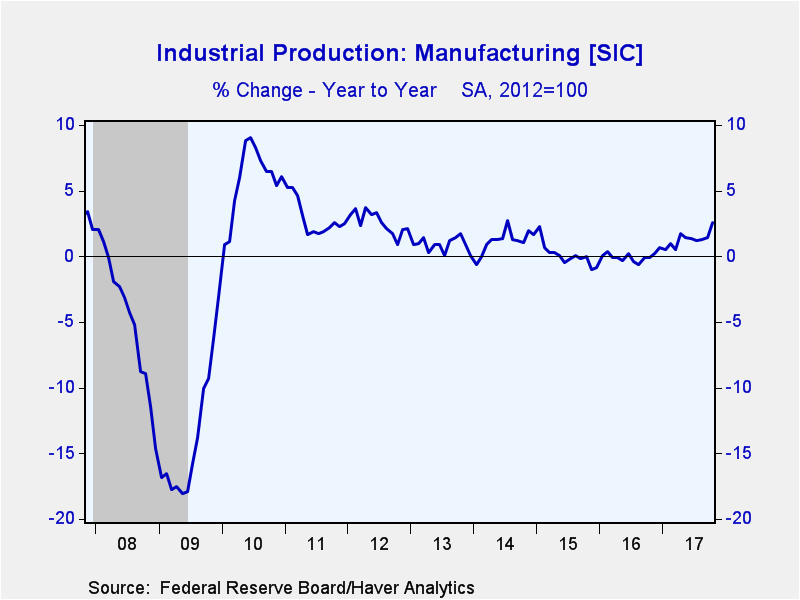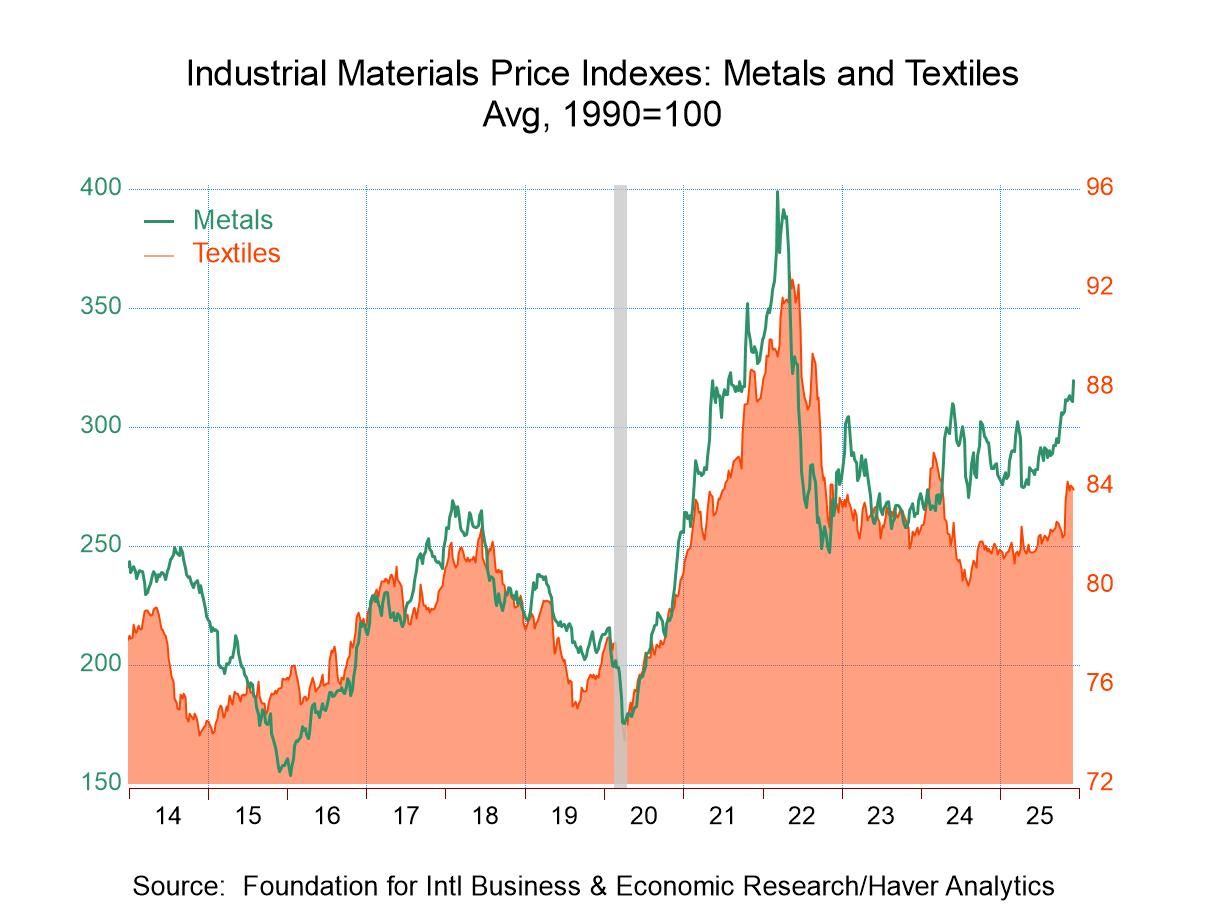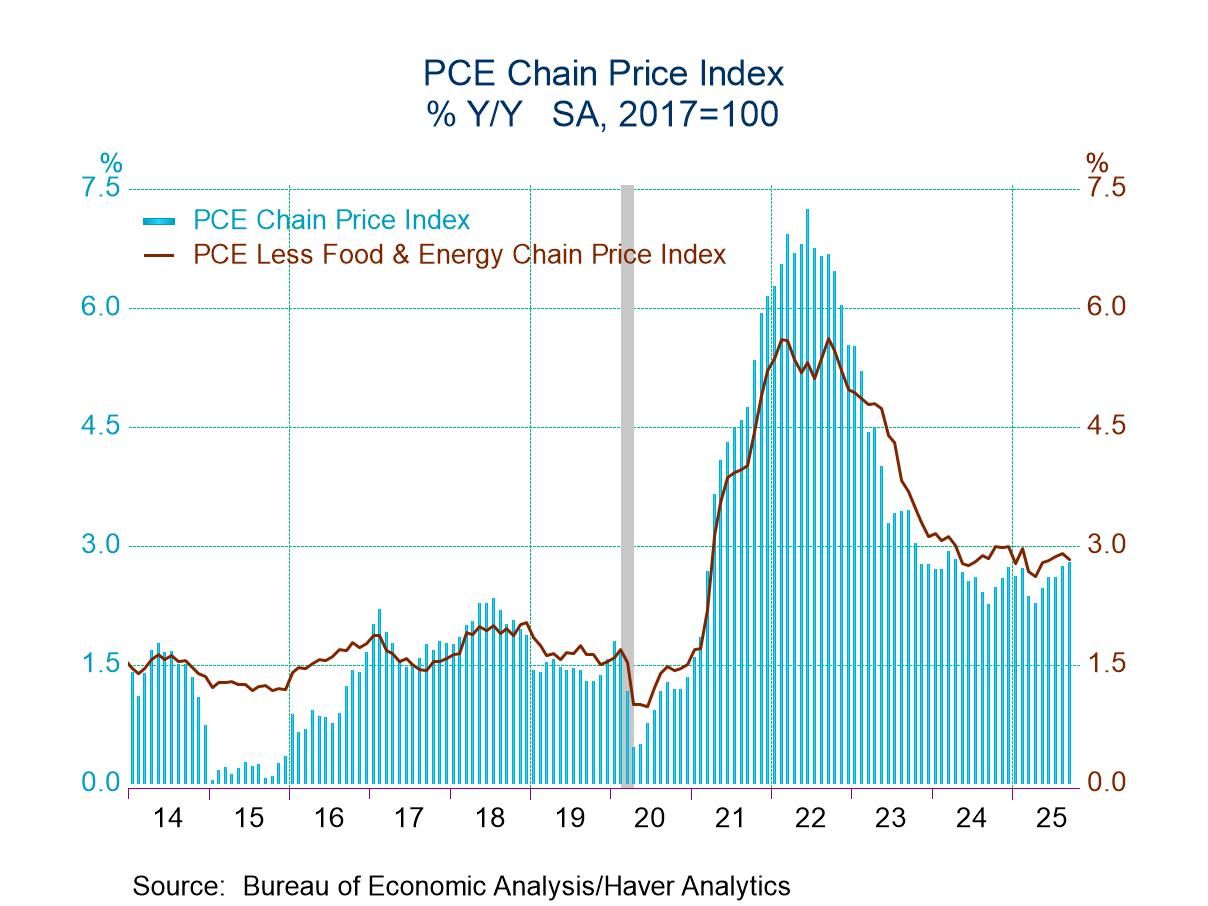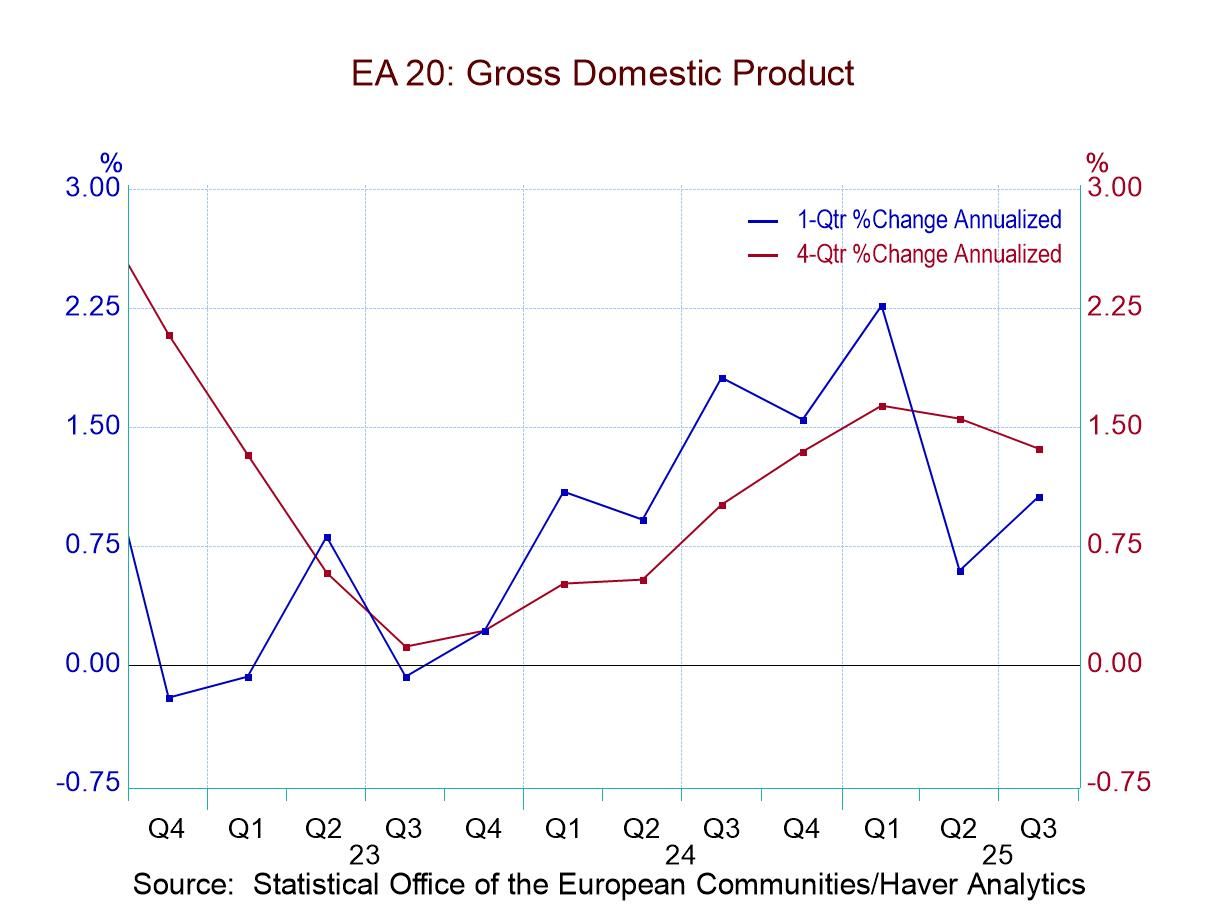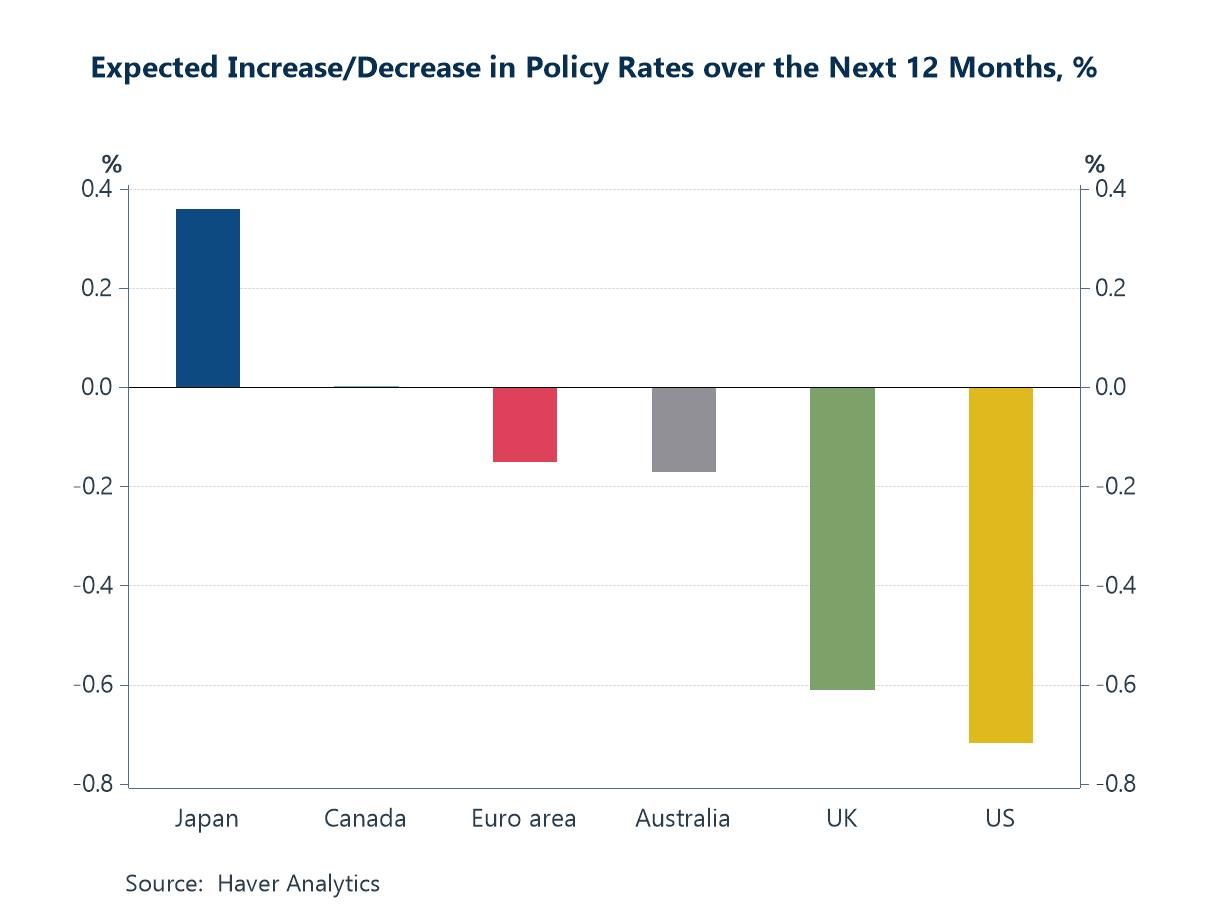 Global| Nov 16 2017
Global| Nov 16 2017U.S. Industrial Production Continues to Strengthen
by:Tom Moeller
|in:Economy in Brief
Summary
The Federal Reserve indicated that industrial production rose 0.9% (2.8% y/y) during October following a 0.4% September rise, revised from 0.3%. It was the strongest increase in six months and surpassed expectations for a 0.5% gain in [...]
The Federal Reserve indicated that industrial production rose 0.9% (2.8% y/y) during October following a 0.4% September rise, revised from 0.3%. It was the strongest increase in six months and surpassed expectations for a 0.5% gain in the Action Economics Forecast Survey. Factory output surged 1.3% (1.9% y/y) following a 0.4% increase, initially estimated as 0.1%. It also was the firmest gain in six months.
A 1.3% increase (3.3% y/y) in materials production led the gain in overall output as it followed zero change in September. Production of consumer products increased 0.9% (1.8% y/y), adding to its 0.5% increase. Motor vehicle & parts production improved 1.0% (-1.6% y/y) following a 1.7% gain. Computers, audio & video product output fell 1.6% (+4.5% y/y) after a 6.0% increase. Appliance, furniture & carpeting production rose 0.5% (-1.0% y/y) on the heels a 0.6% rise. Clothing output gained 1.3% (-9.2% y/y) after two months of decline. Chemical production strengthened 1.0% (1.7% y/y), up for the sixth consecutive month. Business equipment production rose 0.5% (4.1% y/y) following a 1.6% jump. The increase was led by a 0.8% rise (3.3% y/y) in information processing & related equipment output. Production of energy materials declined 0.4% (+4.3% y/y) following a 0.9% gain.
In the special aggregate groupings, selected high-technology product output jumped 1.2% (4.1% y/y), about the same as in September. Computer & peripheral production strengthened 3.7% (20.4% y/y), and semiconductor and related component production gained 1.0% (1.5% y/y). Factory sector production, excluding the auto & high-tech sectors, increased 1.3% (2.8% y/y) following a 0.2% rise.
Capacity utilization rose to 77.0% from 76.4%, its highest level since April 2015. Factory sector utilization strengthened to 76.4%, its highest point since May 2008. Total factory sector capacity rose 0.7% y/y.
Industrial production and capacity data are included in Haver's USECON database, with additional detail in the IP database. The expectations figure is in the AS1REPNA database.
Low Inflation and the Symmetry of the 2 Percent Target from the Federal Reserve Bank of Chicago is available here.
| Industrial Production (SA, % Change) | Oct | Sep | Aug | Oct Y/Y | 2016 | 2015 | 2014 |
|---|---|---|---|---|---|---|---|
| Total Output | 0.9 | 0.4 | -0.5 | 2.8 | -1.2 | -0.7 | 3.1 |
| Manufacturing | 1.3 | 0.4 | -0.2 | 1.9 | -0.0 | 0.1 | 1.2 |
| Consumer Goods | 0.9 | 0.5 | 0.0 | 1.8 | 0.6 | 2.3 | 0.8 |
| Business Equipment | 0.5 | 1.5 | 0.0 | 4.1 | -1.8 | -0.9 | 1.9 |
| Construction Supplies | 0.4 | 1.7 | -0.8 | 3.2 | 1.3 | 0.5 | 3.4 |
| Materials | 1.3 | 0.0 | -0.8 | 3.3 | -2.3 | -1.4 | 5.1 |
| Utilities | 2.0 | -1.0 | -1.3 | 0.1 | -0.3 | -0.7 | 1.4 |
| Mining | -1.3 | 1.5 | -1.2 | 3.8 | -9.1 | -4.3 | 10.7 |
| Capacity Utilization (%) | 77.0 | 76.4 | 76.1 | 75.7 | 75.7 | 76.8 | 78.6 |
| Manufacturing | 76.4 | 75.5 | 75.2 | 75.0 | 75.1 | 75.5 | 75.4 |
Tom Moeller
AuthorMore in Author Profile »Prior to joining Haver Analytics in 2000, Mr. Moeller worked as the Economist at Chancellor Capital Management from 1985 to 1999. There, he developed comprehensive economic forecasts and interpreted economic data for equity and fixed income portfolio managers. Also at Chancellor, Mr. Moeller worked as an equity analyst and was responsible for researching and rating companies in the economically sensitive automobile and housing industries for investment in Chancellor’s equity portfolio. Prior to joining Chancellor, Mr. Moeller was an Economist at Citibank from 1979 to 1984. He also analyzed pricing behavior in the metals industry for the Council on Wage and Price Stability in Washington, D.C. In 1999, Mr. Moeller received the award for most accurate forecast from the Forecasters' Club of New York. From 1990 to 1992 he was President of the New York Association for Business Economists. Mr. Moeller earned an M.B.A. in Finance from Fordham University, where he graduated in 1987. He holds a Bachelor of Arts in Economics from George Washington University.


